
Advanced Modeling and Simulation in Engineering Sciences
Scope & Guideline
Fostering Collaboration for Tomorrow's Engineering Solutions.
Introduction
Aims and Scopes
- Computational Mechanics and Engineering:
The journal emphasizes the use of computational methods to address complex engineering problems, including structural dynamics, fluid mechanics, and thermomechanical systems. - Machine Learning and Data-Driven Approaches:
A significant focus is placed on integrating machine learning techniques with traditional modeling approaches to enhance predictive capabilities, optimize designs, and improve model accuracy. - Multiscale and Multiphysics Modeling:
The journal covers research that involves the interaction of different physical phenomena at various scales, allowing for a comprehensive understanding of complex systems. - Model Order Reduction Techniques:
There is a consistent emphasis on developing and applying model order reduction techniques to simplify complex simulations while maintaining essential characteristics of the original models. - Physics-Informed Neural Networks:
The incorporation of physics-informed neural networks represents a unique contribution, merging data-driven methods with established physical laws for improved modeling accuracy.
Trending and Emerging
- Integration of Machine Learning with Simulation:
There is a marked increase in research that combines machine learning techniques with simulation methods, enhancing predictive accuracy and enabling real-time applications. - Advanced Surrogate Modeling Techniques:
Emerging approaches in surrogate modeling, particularly those that leverage deep learning and data-driven methods, are becoming prominent for reducing computational costs in complex simulations. - Hybrid Modeling Approaches:
The trend towards hybrid models that integrate both data-driven and physics-based approaches is gaining traction, allowing for more robust and adaptable modeling frameworks. - Application of Graph Neural Networks:
The application of graph neural networks in various engineering contexts is emerging as a significant trend, particularly for complex systems where traditional methods may struggle. - Focus on Uncertainty Quantification:
There is an increasing emphasis on uncertainty quantification in modeling and simulations, reflecting the importance of understanding and managing uncertainties in engineering applications.
Declining or Waning
- Traditional Finite Element Methods without Enhancements:
There is a noticeable decrease in papers solely focused on conventional finite element methods, indicating a shift towards more advanced and hybrid approaches that integrate machine learning and other computational techniques. - Basic Theoretical Frameworks:
Research that relies heavily on basic theoretical frameworks without application to complex problems is becoming less frequent, as the field moves towards more applied and interdisciplinary studies. - Simplistic Modeling Approaches:
As the demand for precision and complexity in simulations increases, simpler modeling approaches that do not account for multiphysics or multiscale interactions are declining. - Uncoupled Simulations:
The trend towards integrated and coupled simulations has led to a decline in the publication of studies that focus on uncoupled simulations, reflecting a broader interest in comprehensive system modeling.
Similar Journals
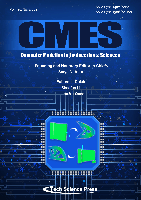
CMES-COMPUTER MODELING IN ENGINEERING & SCIENCES
Fostering Collaboration in Computational MethodologiesCMES-COMPUTER MODELING IN ENGINEERING & SCIENCES is a premier journal published by Tech Science Press, dedicated to advancing knowledge in the fields of computer science applications, modeling and simulation, and software engineering. With an impressive convergence of research from 2000 to 2024, this journal stands out as a vital resource for researchers, professionals, and students alike, fostering innovation and collaboration in computational methodologies. The journal currently holds a Q3 category ranking in multiple disciplines according to the latest metrics, including Scopus, which reflects its growing significance in the academic community. By providing a platform for high-quality research and open discourse, CMES aims to enhance the understanding of complex systems through effective modeling techniques and computational tools. Despite its current classification under open access, the journal remains a cornerstone for those looking to deepen their expertise in cutting-edge computational engineering and science.

Journal of Applied Mechanics and Technical Physics
Pioneering Research in Mechanics and Condensed MatterJournal of Applied Mechanics and Technical Physics is a distinguished publication that serves as a vital resource for researchers and professionals in the realms of mechanical engineering, mechanics of materials, and condensed matter physics. Published by MAIK NAUKA/INTERPERIODICA/SPRINGER, this journal has been committed to disseminating high-quality research since its inception in 1965. With a noted presence in the academic community, it holds a respectable Q3 ranking in multiple categories as of 2023, indicating its relevance and contribution to the field. Although it does not currently offer open access, the journal provides valuable insights and advancements through its rigorous peer-review process. Covering a broad spectrum of topics in applied mechanics and technical physics, it aims to foster innovation and dialogue among scientists, engineers, and scholars alike. Located in the United States, the journal continues to make significant strides in bridging the gap between theoretical research and practical applications, making it an essential read for anyone engaged in these dynamic fields.

Advances in Aerodynamics
Innovating Solutions in Aerospace Engineering.Advances in Aerodynamics is a premier scholarly journal published by SPRINGERNATURE, dedicated to the innovative fields of Aerospace Engineering, Civil and Structural Engineering, Mechanical Engineering, and various aspects of Modeling and Simulation. Since its inception in 2019, this open-access journal has rapidly gained recognition, achieving a commendable Q1 ranking in several engineering categories as of 2023. With its compelling focus on pioneering research and advancements in aerodynamics, it serves as an essential platform for original research articles, reviews, and technical notes that address both theoretical frameworks and real-world applications in sustainable engineering practices. With an impact factor fostering its prominence and visibility in the academic community, the journal provides accessible content that fosters knowledge dissemination among researchers, industry professionals, and students alike. Situated in Singapore and with a commitment to rigorously peer-reviewed research, Advances in Aerodynamics is positioned to play a pivotal role in shaping the future of aerodynamics and its applications across various engineering disciplines.
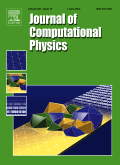
JOURNAL OF COMPUTATIONAL PHYSICS
Advancing the Frontiers of Computational PhysicsJOURNAL OF COMPUTATIONAL PHYSICS, an esteemed publication from ACADEMIC PRESS INC ELSEVIER SCIENCE, serves as a premier platform in the field of computational physics and its interdisciplinary applications. Since its inception in 1966, the journal has provided invaluable insights and significant advancements in areas such as applied mathematics, numerical analysis, and modeling and simulation. With a robust impact factor and ranking in the top quartile across various related categories, including Q1 in Applied Mathematics and Physics and Astronomy, it is essential reading for researchers and professionals aiming to stay at the forefront of computational techniques and methodologies. Although the journal is not open access, it remains highly regarded with a reputation for rigorous peer review and high-quality publications. As the field continues to evolve, the JOURNAL OF COMPUTATIONAL PHYSICS highlights innovative research that not only advances theoretical constructs but also offers practical applications in scientific and engineering domains. For scholars and students, this journal embodies a critical resource for deepening their understanding and fostering dialogue within the scientific community.
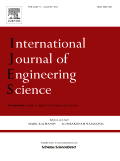
INTERNATIONAL JOURNAL OF ENGINEERING SCIENCE
Driving Excellence in Engineering Science and InnovationInternational Journal of Engineering Science, published by Pergamon-Elsevier Science Ltd in the United Kingdom, stands as a premier platform for pioneering research in the diverse fields of engineering and materials science. Since its inception in 1963, this journal has consistently demonstrated its commitment to advancing academic discourse, maintaining an impressive trajectory that positions it in the Q1 category across multiple engineering disciplines including Mechanical Engineering and Mechanics of Materials as of 2023. With notable Scopus rankings—placing it in the top 5% percentile for Mechanical Engineering and related fields—this journal attracts high-quality, impactful research designed for both industry practitioners and academic scholars. Although it does not currently offer Open Access options, its readership is enriched by comprehensive peer-reviewed articles, fostering a deeper understanding of complex engineering problems and innovative solutions. The International Journal of Engineering Science continues to be an invaluable resource for researchers, professionals, and students committed to pushing the boundaries of knowledge in engineering and materials science.
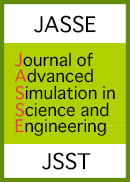
Journal of Advanced Simulation in Science and Engineering
Exploring Innovative Frontiers in Simulation TechnologyJournal of Advanced Simulation in Science and Engineering, published by the Japan Society for Simulation Technology (JSST), stands as a pivotal platform in the dynamic field of simulation technology, focusing on cutting-edge research and applications in science and engineering. With the ISSN and E-ISSN of 2188-5303, this journal aims to disseminate high-quality research that drives innovation and enhances understanding among practitioners, academics, and students alike. As an essential resource for those engaged in simulation methodologies, it explores a wide range of topics, including but not limited to computational modeling, virtual simulations, and their applications across various engineering disciplines. The journal is indexed in prestigious databases, aiming for a strong impact factor that reflects its commitment to scholarly excellence and relevance. Its open access policy further facilitates wider dissemination and accessibility of research findings, thereby fostering greater collaboration and advancement in the field. Researchers and professionals are encouraged to contribute their findings and insights, establishing the Journal of Advanced Simulation in Science and Engineering as a leading authority in advancing simulation technologies for future applications.
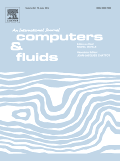
COMPUTERS & FLUIDS
Exploring Innovative Solutions in Computer Science and EngineeringCOMPUTERS & FLUIDS, published by PERGAMON-ELSEVIER SCIENCE LTD, is a premier journal in the fields of Computer Science and Engineering, with a distinguished history dating back to 1973. Its Q1 ranking in both Computer Science (Miscellaneous) and Engineering (Miscellaneous) illustrates its high impact and relevance, being positioned among the top tier of scientific publications. With a robust focus on the intersection of computational methods and fluid dynamics, this journal serves as a vital platform for researchers, professionals, and students dedicated to advancing knowledge and technology within these domains. Although it is not an open-access journal, its articles are accessible through various academic institutions and libraries, ensuring that vital research reaches its intended audience. Readers can explore innovative methodologies and applications, reinforcing the journal's commitment to enhancing the understanding of fluid mechanics through cutting-edge computational approaches. For more details, visit the official website of COMPUTERS & FLUIDS to stay abreast of the latest research advancements.
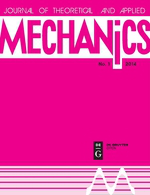
Journal of Theoretical and Applied Mechanics-Bulgaria
Unveiling New Dimensions in Mechanical EngineeringThe Journal of Theoretical and Applied Mechanics-Bulgaria, with the ISSN 0861-6663 and E-ISSN 1314-8710, is a pivotal publication in the field of mechanics, published by the esteemed BULGARIAN ACAD SCIENCES, INST MECHANICS. Based in Germany, this journal serves as a forum for researchers and practitioners to disseminate groundbreaking theories and applications in Computational Mechanics, Mechanical Engineering, and Modeling and Simulation. As of 2023, it is classified in the Q4 quartile for these categories, reflecting its emergence in the academic landscape, though it has room for growth in visibility and impact. The journal encompasses an ambitious scope aimed at fostering innovation and collaboration among academics, making it an invaluable resource for students and professionals seeking to stay abreast of emerging trends and methodologies in mechanics. Despite its current rank and percentile indicators in Scopus, the journal is committed to enhancing its reach and impact within the community through future editions converging from 2016 to 2024. With no open access options currently available, it emphasizes the importance of institutional subscriptions and academic partnerships to maintain its quality publication standards.
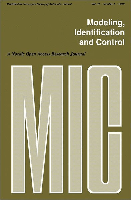
MODELING IDENTIFICATION AND CONTROL
Exploring the Frontiers of Computer Science ApplicationsMODELING IDENTIFICATION AND CONTROL is a prominent academic journal dedicated to the fields of Computer Science Applications, Control and Systems Engineering, Modeling and Simulation, and Software. Published by MIC in Norway, this open access journal has been providing valuable insights and innovative research since 1980, promoting the free dissemination of knowledge. With a reputation reflected in its 2023 quartile rankings—Q3 in Computer Science Applications, Q2 in Control and Systems Engineering, and Modeling and Simulation, as well as Q3 in Software—this journal plays a vital role in advancing theoretical and practical solutions within its disciplines. Researchers and professionals benefit from its rigorous peer-review process and impactful publications, fostering collaboration and the exploration of emerging technologies across various applications. The journal's continual commitment to excellence is exemplified by its active presence in Scopus, where it maintains respectable rankings in relevant engineering and computer science subcategories, supporting its goal to be a pivotal resource for scholarly communication and practical advancements.
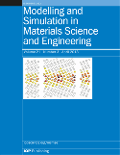
MODELLING AND SIMULATION IN MATERIALS SCIENCE AND ENGINEERING
Shaping the Future of Materials Through ResearchMODELLING AND SIMULATION IN MATERIALS SCIENCE AND ENGINEERING, published by IOP Publishing Ltd, serves as a vital resource for researchers, professionals, and students engaged in the multifaceted fields of materials science, condensed matter physics, and computational mechanics. Since its inception in 1992, this journal has been committed to advancing knowledge through high-quality research articles, reviews, and simulations that explore complex interactions within materials. With an impressive Scopus rank in multiple categories, including Q2 in Materials Science and Mechanics of Materials, it reflects its significant influence and relevance in the academic community. Though not an open-access journal, it provides critical insights and developments in modeling techniques and simulations aimed at improving material performance and understanding thermodynamic processes, making it an essential read for those at the forefront of materials innovation. As it continues to expand its scope and reach into 2024 and beyond, MODELLING AND SIMULATION IN MATERIALS SCIENCE AND ENGINEERING remains a key platform for disseminating groundbreaking research that shapes the future of the discipline.